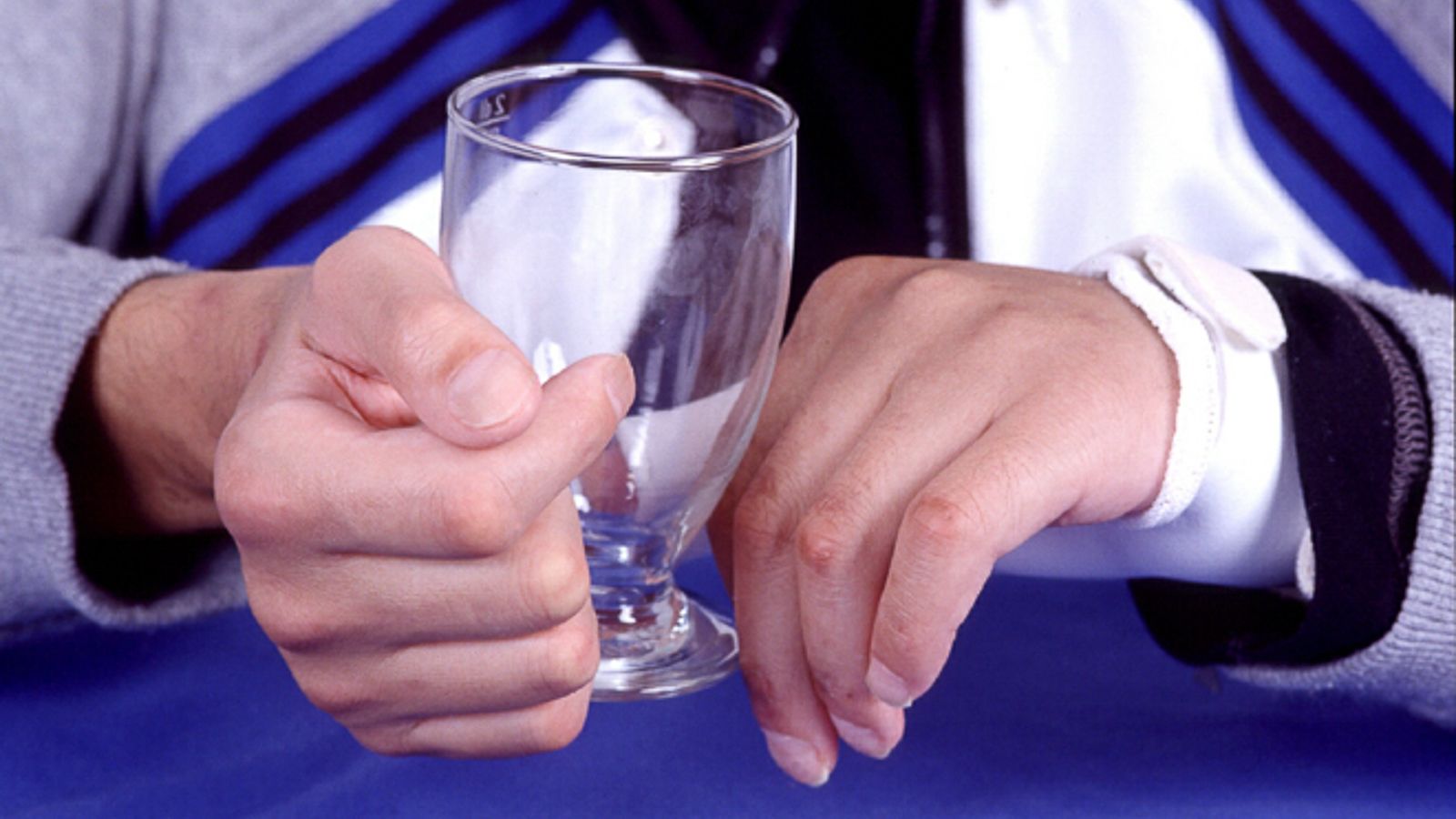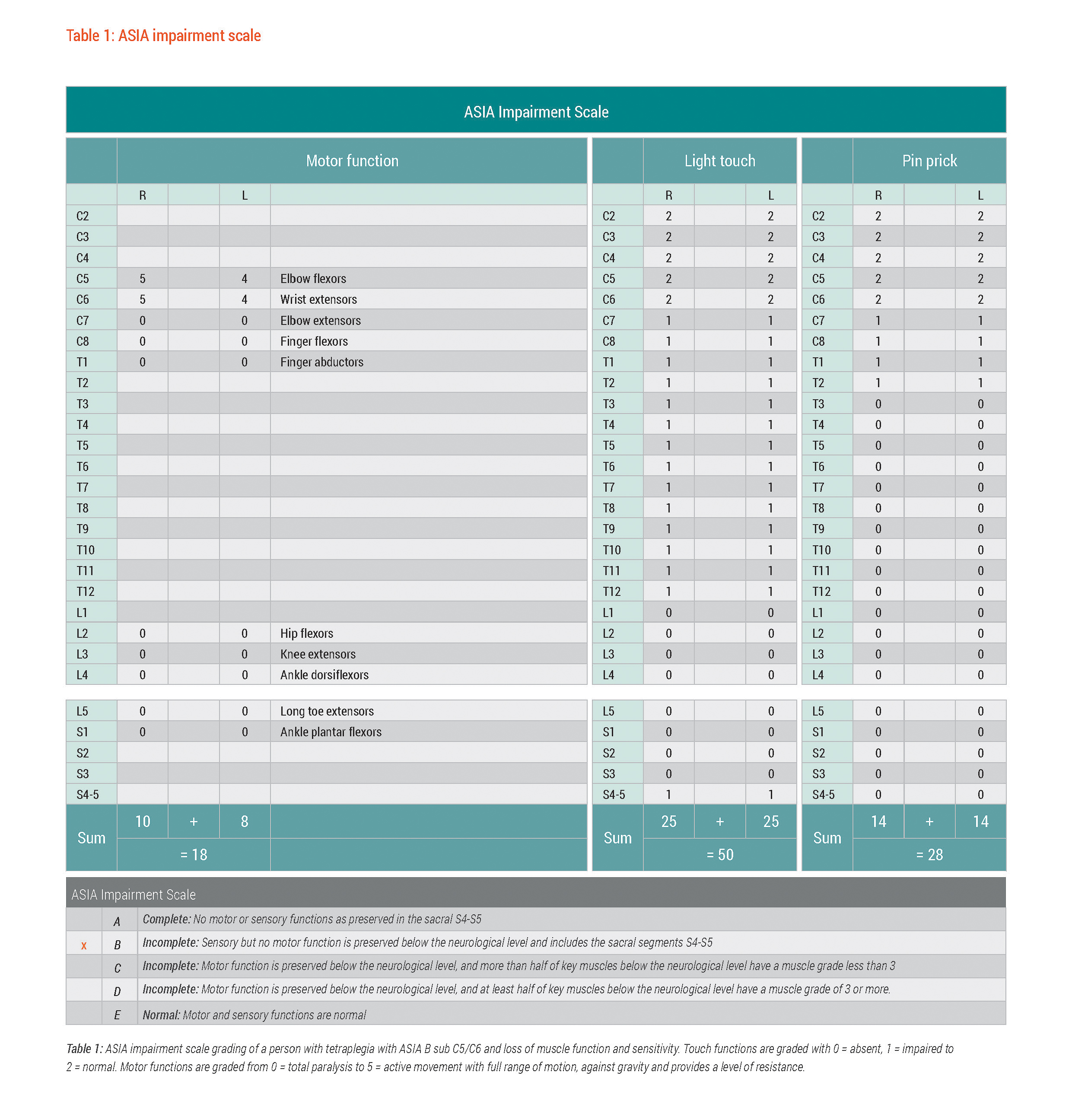General Introduction

SCI is an injury to the spinal cord that results in a temporary or permanent change in motor, sensory, or autonomic functions of the injured person's body.12 To help determine future rehabilitation and recovery needs, the extent of a SCI in terms of sensory and motor functions is described using the American Spinal Injury Association (ASIA) impairment scale.45 This scale indicates how much sensation a person feels after light touch and a pin prick at multiple points on the body, and tests key motions on both sides of the body. Table 1 illustrates the ASIA impairment scale grading of a person with tetraplegia with ASIA B sub C5/C6 and loss of muscle function and sensitivity. ASIA B means that the SCI is incomplete; the person has some sensations but with impaired motor functions below the lesion of cervical 5 and 6. In the ASIA impairment scale, 0 indicates total paralysis (in red), 1 indicates palpable or visible contraction and 2 indicates active movement. To learn more about SCI and ASIA see the section on “Spinal Cord Injury (SCI)”.
Table1

Table 1: ASIA impairment scale grading of a person with tetraplegia with ASIA B sub C5/C6 and loss of muscle function and sensitivity. Touch functions are graded with 0 = absent, 1 = impaired to 2 = normal. Motor functions are graded from 0 = total paralysis to 5 = active movement with full range of motion, against gravity and provides a level of resistance.45
The person must overcome significant obstacles to interact with his or her environment and is often dependent upon others to accomplish everyday activities. Learning to cope with this situation is a complex process that affects a person’s quality of life.6 How a person deals with a condition such as tetraplegia may play a significant role in the true benefits of even proven surgical and medical interventions. For instance, one accepted procedure, upper extremity surgery (see Box 1), has been shown to greatly improve the functioning of the hand and arm in persons with tetraplegia resulting in improvements in activities of daily living, increased independence and better quality of life.789
Box 1 | Upper Extremity Surgery Used for the Improvement of Functioning in Tetraplegia
Upper extremity surgery is a proven surgical technique that has shown improvement in the hand and arm functioning of persons with tetraplegia. The procedure, as described by Moberg,7 consists of two approaches :
- The restoration of elbow extension is achieved through the deltoid-to-triceps transfer. The totally paralysed or weak triceps are restored utilising the posterior deltoid, which is separately innervated.
- The restoration of hand grip is achieved in four steps:
- The construction, if needed, of a wrist extensor using the brachioradialis;
- The increase of the mechanical advantage of the weak flexor system through the release of the flexor pollicis longus tendon;
- Stabilisation of the distal thumb joint with a Kirschner wire;
- Tenodesis of the flexor pollicis longus tendon.
The goal of upper extremity surgery is to allow a “tripod pinch” as well as a degree of voluntary motion of the fingers. In a study of 57 patients and 97 reconstructions Mohammed et al. reported that 70% had good or excellent subjective results.10
However, surgery and its associated post-operative management alone may not guarantee positive results. To maximise the benefit of the surgery, the rehabilitative process following surgery should take into account the person’s perspective.111213 In fact, a focus on "person-centred service" is increasingly emphasised in the field of rehabilitation management.14
The following case study aims to illustrate the potential as well as the challenges of translating the benefits of upper limb surgery into positive, meaningful outcomes for a person with tetraplegia.
""The rehabilitative process includes the person's individual perspective.""